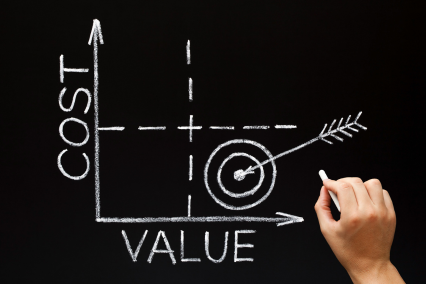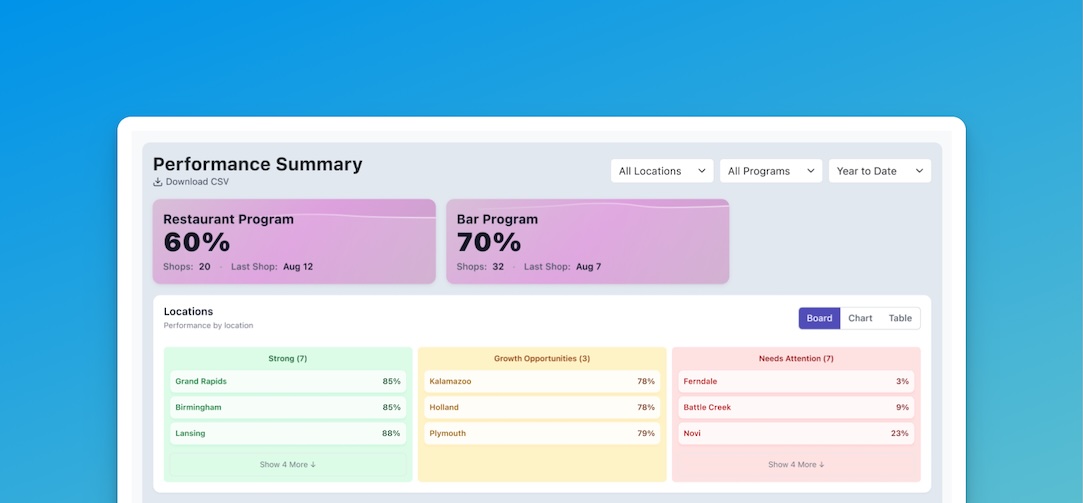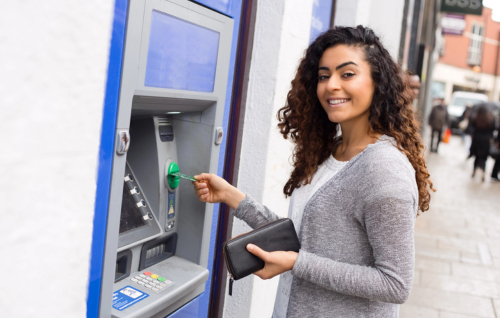
When you’re trying to boost your business’s overall revenue providing a purchase reimbursement for your CX evaluators might feel counterintuitive. After all you’re trying to save money not spend it.
However offsetting the price of an evaluator’s shop is standard practice—and statistics prove that it’s worth the investment. There are a variety of ways your business can benefit from paying for a mystery shopper’s visit. Not only will a CX evaluation help you improve your customer experience but it will also come back to you in other ways as well.
Let’s explore the types of scenarios where a purchase reimbursement might be worthwhile—and how your business can directly benefit from it.
It’s Not an Expense It’s an Investment
The goal of a CX evaluation is of course to see how well your business performs for potential customers. Once you get that information you can then identify areas where you’re succeeding… and areas where you can improve. That data can only be valuable if the CX evaluation is performed with authenticity and integrity.
A purchase reimbursement can go a long way in ensuring the quality of your data. When a shopper has funds to work with they may feel more free to make purchases without risking their own wallet (as much). That creates a more realistic shopping experience for both the shopper and your business.
In fact statistics show that shoppers often buy more when provided with a purchase reimbursement. On average evaluators spend 30% more than they would without the reimbursement. That’s because they see it as a 70% personal savings. Additionally it’s common for these shoppers to become loyal customers once they’ve finished their evaluation. It’s a win-win for everyone involved!
This incentive is also a way to attract more quality CX evaluators. An experienced evaluator who knows what they’re doing won’t settle for a company that’s too cheap to facilitate the evaluation. If you want the best quality CX evaluation you should make the investment. It’s the only way to get a truly objective perspective into your business’s everyday operation—and make improvements.
Types of Purchase Reimbursement Scenarios
The good news is you don’t have to pay for an evaluator’s own personal shopping spree. There are plenty of different ways that CX evaluations are done—and not all of them involve a purchase reimbursement. Certainly none of them involve giving your shopper a blank check.
Inquiry Only
One way to conduct a CX evaluation is to commission a shopper to simulate a window-shopping experience. This is a great way to gain insight into what happens when a potential customer doesn’t commit to a sale—at least not right away. How does your sales staff react? What are the follow-up steps? Are they effective?
Depending on your industry this could be a key element of your CX evaluation process. Especially when offering big-ticket items you’ll likely come in contact with many window-shoppers. It’s part of your process. By evaluating and refining your inquiry pitch you can improve the experience as you go. And you can do all that without providing a purchase reimbursement.
In-Store Purchase
This is usually the first thing people think of when imagining what a mystery shop looks like. They envision themselves walking into a store buying a little of everything writing down a few impressions and critiques and then taking off with the goods.
While that might be the case in some situations a quality CX evaluation goes a bit deeper. Typically the shopper will have a specific shopping goal in mind. Plus they won’t leave with only a vague idea of how good the experience was. Professional shoppers have inside knowledge of how your industry works. That’s how they provide hard data on the effectiveness of your CX—hard data you can rely on and work with.
A purchase reimbursement for a skilled mystery shopper is merely a means to an end. It’s a way to facilitate their work. Their goal is to get an expert objective evaluation of the purchase experience. The reimbursement they receive simply makes it easier for them to do so.
Purchase-and-Return
Another method for CX evaluation is to task the shopper to make a purchase and then return it to the store. This type of evaluation goes a step further. It allows you to see what your customers experience when they have to return an item—which will invariably happen even in the best businesses.
But don’t think that this means you won’t need to provide a full purchase reimbursement. Depending on the testing scenario it might be necessary to foot the bill for a moment. Remember the purpose of a reimbursement is to allow the CX evaluator to truly live your customer experience. An adequate purchase reimbursement protocol can facilitate that experience.
Which Type Should I Choose?
To get a full view of your CX we recommend using a combination of all three methodologies. Each has different goals and objectives. And each presents different scenarios your customers will experience. You might be drawn to one or another based on perceived purchase reimbursement price. But remember that it’s only a small piece of the puzzle of CX evaluations.
How to Determine Your Purchase Reimbursement
Now that you’re on board to invest in a CX evaluation with a purchase reimbursement what should it be? There are a few elements to consider:
- Know your budget. Yes it is an investment—but you might not have unlimited cash to provide. You should also consider your typical customer’s budget when shopping for your offerings. Try to furnish at least enough for an average purchase experience for each shop.
- Choose your goal. Chances are there will be a wide variety of shopping experiences for your potential customers. Some might be big spenders and others might be looking for the cheapest option only. Figure out which experience you want to evaluate with each CX evaluation. Then start formulating a purchase reimbursement from there.
- Be familiar with your industry. Is yours a luxury brand? Or does your crowd prefer a fast fix? Get to know your audience and their average spending habits. This will help you gauge what kind of purchase reimbursement your evaluator will need. Plus if you can get familiar with the CX evaluation industry so you’ll know what your evaluator is expecting.
Note that many business owners and operators want to be as frugal as possible with their expenses. This sometimes leads to a self-empowered DIY attitude—even when it comes to CX evaluations. And while that can be helpful in some situations it’s completely understandable if all this information seems overwhelming. Don’t be afraid to look for a professional CX evaluation service to handle it for you. It’s likely not as expensive as you think!
Use Cases: See a Purchase Reimbursement In Action
Need some examples? Here are a few hypothetical CX evaluation scenarios that demonstrate a purchase reimbursement in action.
Example 1: Buy Two Get One
Business #1 is a retail franchise that sells soaps lotions perfumes and candles among other items. They have a loyal customer base frequent seasonal sales and an average item price of $15. For their CX evaluation they decided to provide a purchase reimbursement of up to $25. This allows the evaluator to cover one or two items in their purchase.
However if there is a “Buy Two Get One” sale in progress at the time of the shop such a low purchase reimbursement rate might discourage the evaluator from participating. This could skew the results especially if this sale is typically very popular with their customers. We might recommend providing a bit more funding for an accurate CX evaluation.
Example 2: Restaurant Shop
Our next scenario comes from a different industry. Business #2 is a mid-range family-friendly Italian restaurant with locations all over the state. For their CX evaluation they might decide to pay for the average bill for a single person—about $22.
However not many people patronize this restaurant alone! We recommend creating a purchase reimbursement that includes an average bill for two. That way the evaluator can bring someone with them. This would allow them to simulate a more realistic customer experience—and provide a more accurate evaluation.
Example 3: High Roller
Finally let’s take a look at a luxury brand. Business #3 is famous worldwide for their high-end watches. Nowadays they mostly do business online—but they do want to evaluate the CX of their storefronts as well. However some of their most expensive items sell for tens of thousands of dollars and this skews their average price very high.
For a strong CX evaluation a purchase reimbursement for a mid- to low-end item might be better suited. Although their biggest spenders might shell out more money they’ll typically receive a similar in-store experience with a lower purchase as well.
A Purchase Reimbursement Is an Investment in Your CX
No matter how big your business is a quality CX evaluation can provide invaluable insight into what your business looks like from a prospective customer’s point of view. And a quality CX evaluation likely starts with a realistic purchase reimbursement. Not only will your evaluation be more reliable but you’ll also likely gain a new returning customer. Additionally a discerning purchase reimbursement will provide valuable data. Since this data is vital for improving the way your business makes a sale it can have a huge impact on your bottom line.
Subscribe to the Buzz
Receive exclusive insights, tips, and customer experience strategies straight to your inbox.







